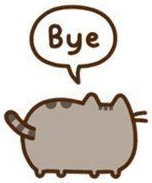Compensatory increase of the cervico-ocular reflex with age
Cat.Storage/SubCat.Research 2018. 5. 30. 17:01What is cervico-ocular reflex?
The cervico-ocular reflex (COR) is an ocular stabilization reflex that is elicited by rotation of the neck. It works in conjunction with the vestibulo-ocular reflex (VOR) and the optokinetic reflex (OKR) in order to prevent visual slip over the retina due to self-motion.
The ocular stabilization reflexes serve to stabilize the visual image on the retina during head movements. Several sensory systems contribute to this process. The vestibulo-ocular reflex (VOR) moves the eyes on the basis of vestibular information opposite to the direction of head movement. It is mainly responsive to head movements with a high frequency. The optokinetic reflex (OKR) responds to visual motion stimulation. It directs the eyes in the same direction as the visual slip on the retina. The cervico-ocular reflex (COR) is a reflexive eye response that is elicited by rotation of the neck. The proprioception of muscles and the facet joints of the cervical spine form the receptor part of this reflex. In contrast to the VOR, both the OKR and COR respond optimally to head movements with a low velocity. In an optimal situation these stabilization reflexes work in conjunction at all head velocities in order to optimize the ocular response.
Does the COR change with age?
The VOR and the OKR decrease with old age whereas the COR increases with age.
Does the COR strength is influenced by the strength of the VOR or OKR?
In order to investigate whether the COR strength is influenced by the strength of the other stabilization reflexes (VOR, OKR), an experiment was conducted. The experimental result found that there appeared to be a link between the properties of the COR and the VOR, but not between the OKR and the other reflexes (COR, VOR).
Let's take a look at the result more in detail. In the experiment, both the VOR and the COR correlated with age. The VOR decreases, and the COR increases. Their relationship seems to a negative relation: the higher the VOR, the lower the COR. Therefore, the strength of the COR can be partially predicted by the strength of the VOR.
In other words, the COR can compensate for loss of vestibular function. When the gain of the VOR is lower than desired, the COR can be upregulated. The COR is most responsive at low velocities, whereas the VOR is responsive at high frequencies. However, even at low velocities the VOR often has a higher gain than the COR. Such a compensation can obviously only be effective in the range where the COR is active, and will therefore not influence performance at high frequencies.
Reference
Kelders, W. P. A., et al. "Compensatory increase of the cervico‐ocular reflex with age in healthy humans." The Journal of physiology 553.1 (2003): 311-317.
'Cat.Storage > SubCat.Research' 카테고리의 다른 글
| Necker Cube (0) | 2018.11.08 |
|---|---|
| [Presence Questionnaire] Witmer-singer (0) | 2018.07.18 |
| Classification of Eye Movements based on their functions (0) | 2018.01.19 |
| Comparison method for two groups (0) | 2017.01.10 |
| Phase & Magnitude analysis in Fourier Transform (0) | 2016.10.17 |



